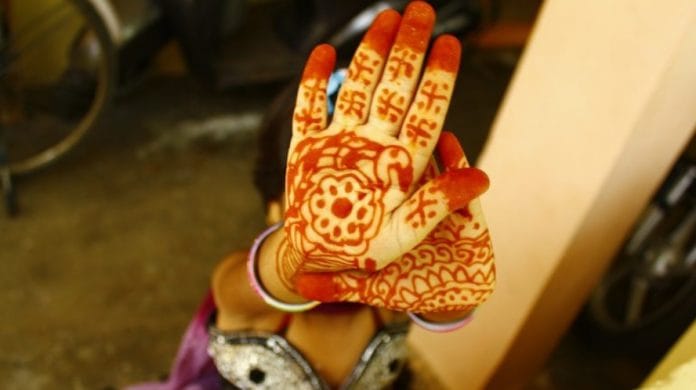New Delhi: The 2017 Supreme Court judgment on which the Centre has relied to amend the Prohibition of Child Marriage Act, 2006 (PCMA) to raise the marriage age of women from 18 to 21 had made significant observations on the law not making child marriages ‘void’ (that which has no legal standing), but ‘voidable’ (something legal, but which can be annulled later by one party of a contract).
A bench of justices M.B. Lokur and Deepak Gupta (both are now retired) called it “strange” for the PCMA not to declare child marriage void, while prohibiting and criminalising it.
Both judges had authored separate but concurring judgments to opine that the PCMA “needs a serious reconsideration” for its “effective implementation”, so that it acts as a deterrent to “prevent or reduce child marriages”.
The court expressed its views on the shortcomings in the PCMA when it read down Exception 2 of Section 375 (rape) of the Indian Penal Code. Under the said exception a man cannot be charged with rape if he has sexual intercourse with a girl aged between 15 and 18 if she is his wife. The 2017 judgment on the rape law held that it would now be a crime to have sexual intercourse with a wife younger than 18.
On PCMA, the court had observed: “Interestingly, notwithstanding the fact that a child marriage is only voidable, Parliament has made child marriage an offence and has provided punishments for contracting a child marriage.”
Also read: Modi govt introduces bill to increase women’s marriage age to 21 years in Lok Sabha
Conditions for ‘void’ marriages
A ‘void’ marriage means a wedlock that has not taken place in the first place, meaning the marriage is not valid from the very beginning.
The PCMA outlines conditions under which a marriage is void. They are — when a minor child is enticed out of the keeping of the lawful guardian to marry, is forced or compelled or by deceitful means is induced to go from any place or is sold for the purpose of marriage.
However, marriage itself with a minor is not void under the PCMA. It makes child marriage voidable at the option of any contracting party, who was a ‘child’ at the time of the marriage.
This, at present, can be done within two years of that person attaining majority. Since the marriage age for a girl under the current law is 18, she can move the court to annul the marriage by age 21. For a boy, for whom the legal marriage age is 21, 23 years is the outer limit to seek annulment.
Widening window for annulment
With the recent amendment proposing to widen this window from two to five years, both girls and boys will have time till 23 years to file a marriage annulment petition.
However, the court had observed in 2017 that both the number of prosecutions and cases for “annulment of marriage filed under PCMA are abysmally low”.
It was for this reason that the court had advised all states to adopt the route taken by Karnataka to void child marriages to curtail the practice.
In an elaborate discussion on the provisions of the PCMA, the SC had noted in its 2017 judgment that “child marriage is sought to be somehow ‘legitimised’ by the Union of India and the onus for having it declared voidable or a nullity is placed on the child bride or the child groom.”
Origins of PCMA
The judgment traced the origin of the PCMA and noted that the minimum age for marriage of a girl child was fixed in 1929, with the enactment of Child Marriage Restraint Act, 1929, as 14 years. In 1940, it was increased to 15, and then to 18 in 1978.
The Child Marriage Restraint Act was repealed by enactment of the PCMA in 2006, which criminalised child marriages in India. This was after the National Charter for Children was notified in 2004. The National Charter was followed by the National Policy for Children in April 2013, which explicitly recognised that every person below the age of 18 is a ‘child’.
The large to-do list in the National Policy led to the National Plan of Act for Children in 2016, which attributed early marriage of girls as one of the factors for neo-natal deaths.
Also read: Why raising marriage age of women is another step towards BJP’s pet goal of uniform civil code
‘Ambivalent’ about child marriages
On analysing the objective of the law, the court highlighted in its 2017 judgment that, “It is quite clear from the above that Parliament is not in favour of child marriages per se, but is somewhat ambivalent about it.”
It then advised the Union of India to take an informed decision on the PCMA’s effective implementation and “actively prohibit child marriages” which, according to the court, encourages sexual intercourse with a girl child.
Speaking to ThePrint, Justice Gupta, one of the two judges who delivered the 2017 judgment on the rape law, said: “Law cannot bring around social change. If the PCMA in its current form could not prohibit child marriages, it may not be a workable option after an amendment. Fear of law has not worked in this case. More attention should have been paid to ensure the law works with 18 as the marriageable age and then probably raise it to 21.”
The former judge added that an increase in the marriage age of women could give rise to more cases of elopement.
“Welfare schemes and catchy slogans are excellent for awareness campaigns, but they must be backed up by focused implementation programmes, other positive and remedial action, so that the pendulum swings in favour of the girl child who can then look forward to a better future,” the court had said in its 2017 judgment.
(Edited by Saikat Niyogi)
Also read: Child marriage cases in India filed mostly against elopement, not forced unions, study says






